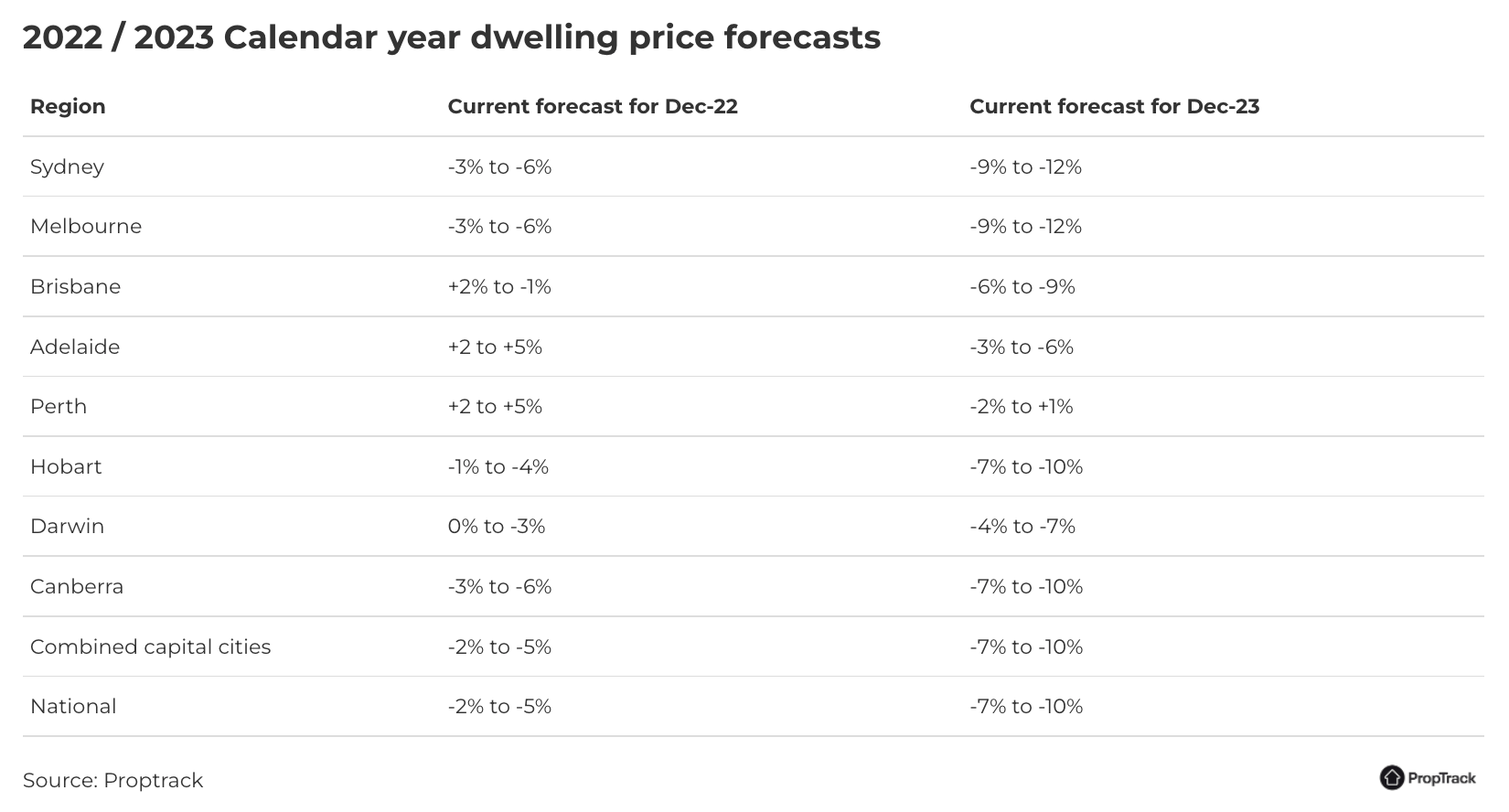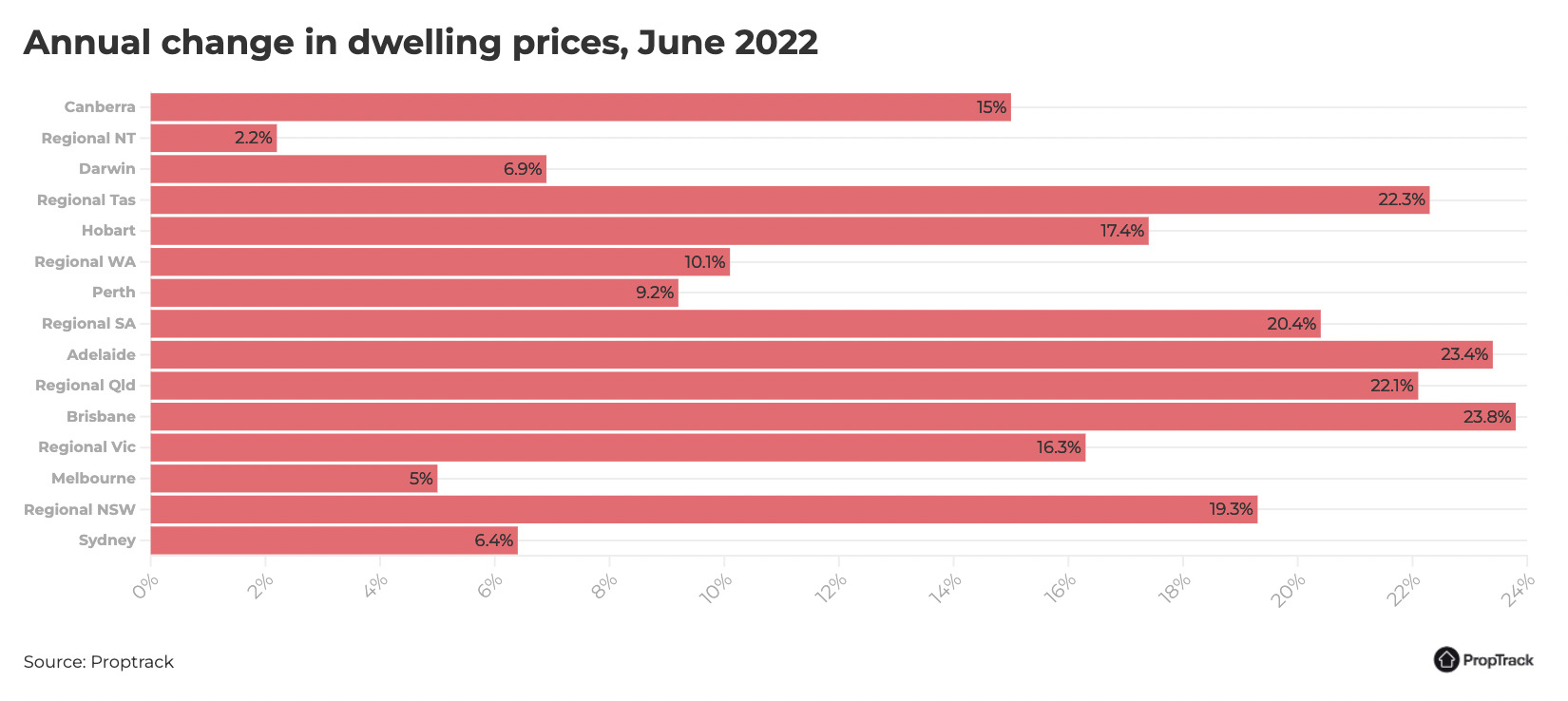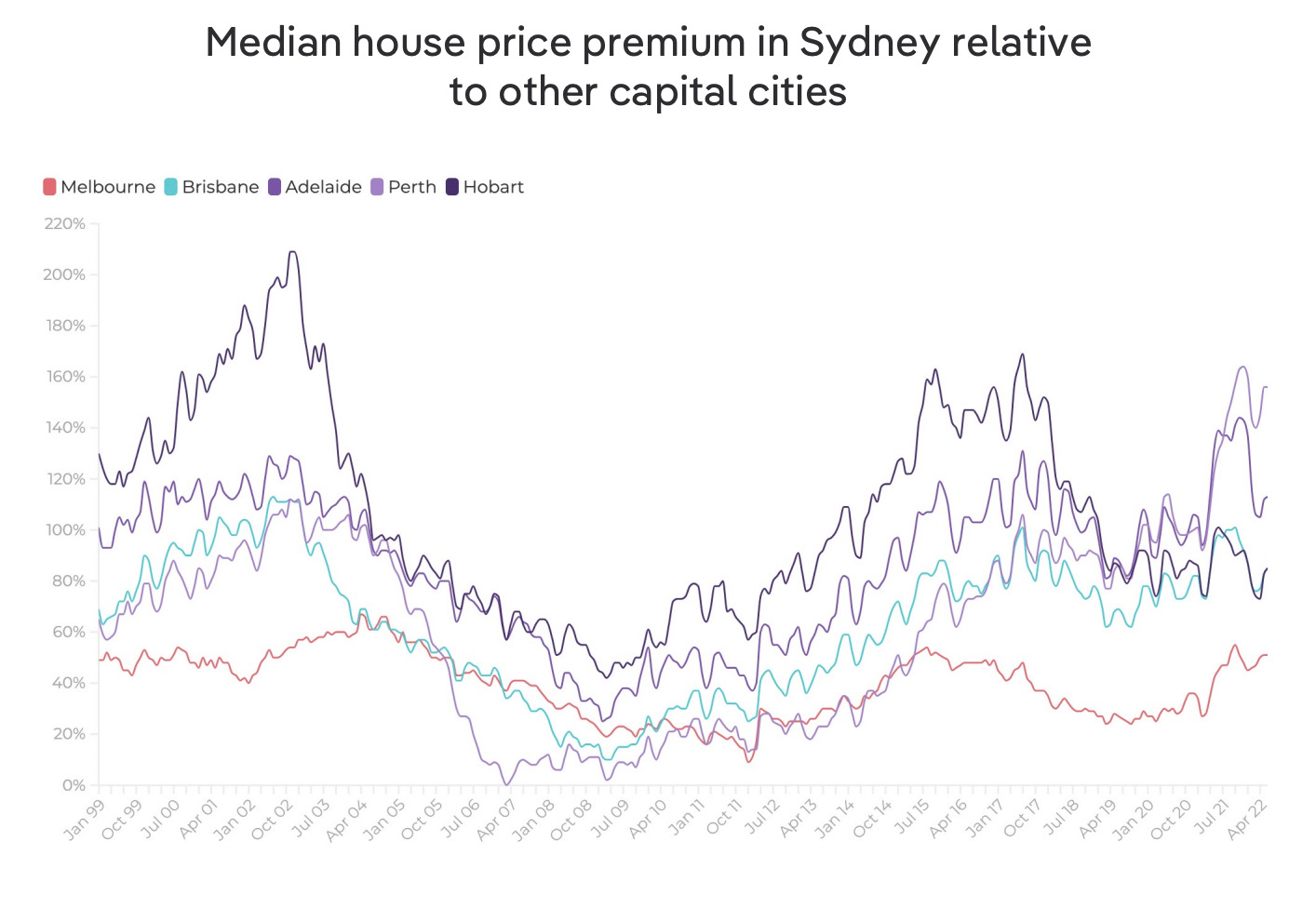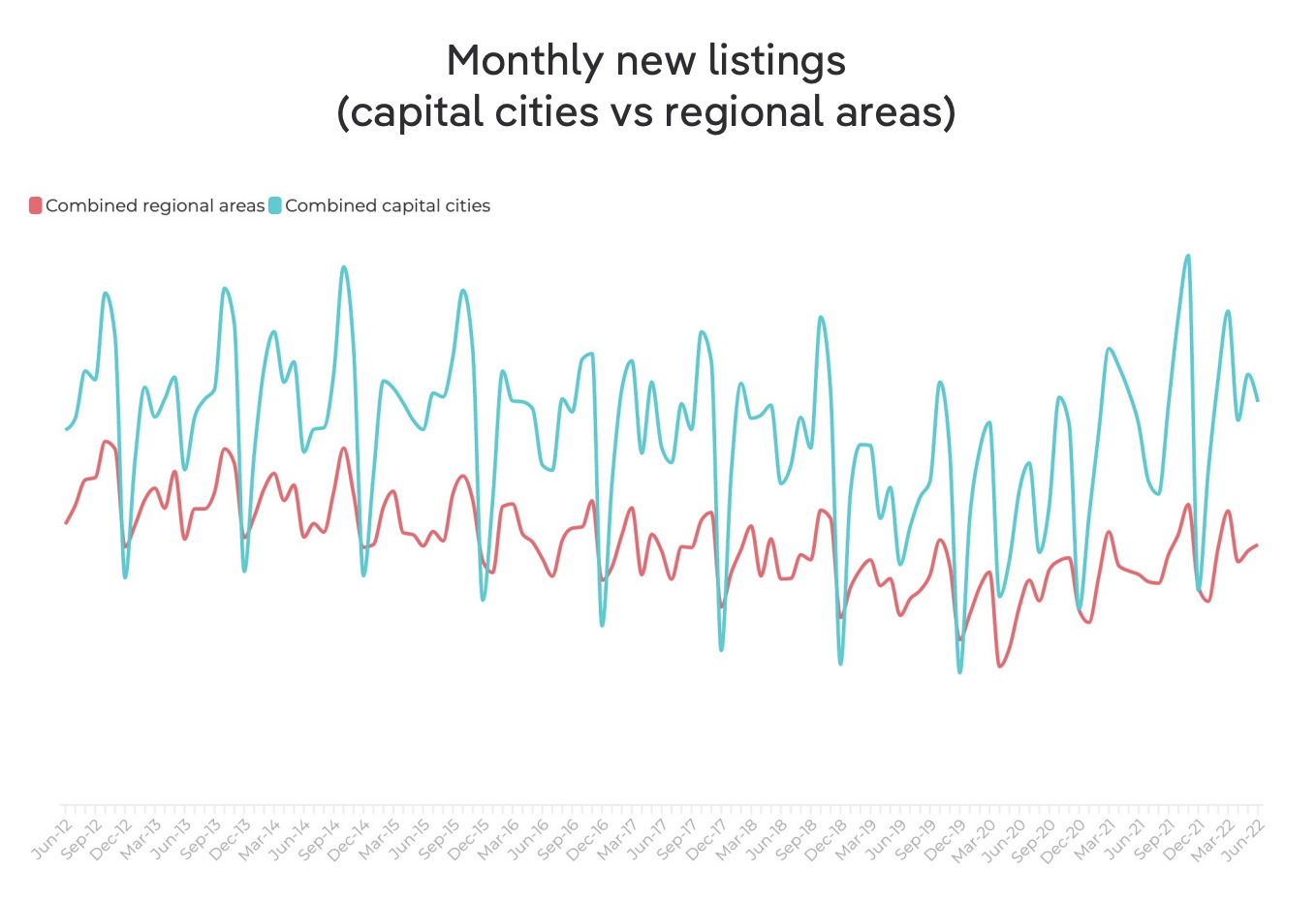Aussie property prices are facing 15% drops, because ‘triple-whammys’ will do that

Via Getty
Aussie property prices will be 5% cheaper by Christmas because this ship is taking water, the REA Group says.
The news comes hot on the heels of CoreLogic blaming a “triple whammy” of tepid buyer commitment, fast rising interest rates and persistent inflation.
According to new work by the group’s property data firm PropTrack, those rising cash rates mixed in with the inflation that’s making every bloody little thing cost more is already making life harder for Australian mortgage holders.
And looking further out, PropTrack research shows housing prices could drop by as much as 15% by the end of 2023.

The most expensive cities, Sydney and Melbourne, are set to lead the falls, with prices to retreat between 3% and 6% this year and 9% to 12% in 2023.
Adelaide and Perth are the cities which will hold out strongest, both expected to see between 2% and 5% growth by the end of this year.
Next year, Perth (-2% to +1%) may continue to see growth, while Adelaide will see a decline in prices (-3% to -6%).
The year to June in a spoon
Over the 12 months to June 2022, national property prices increased by 11.5%, which was down from an annual increase of 23.2% six months earlier and the peak annual growth of 24.8% in October 2021. In fact, the 11.5% annual increase in prices was the slowest rate of growth since January 2021. The 0.5% fall in prices over the June 2022 quarter was the largest quarterly decline since April 2019.

Home prices have grown at an exceptional pace over the last two years, rising 34% since the pandemic onset in February 2020. Even with a 15% fall by the end of next year, home prices will still be well above pre-pandemic levels.
You’re Sydney the best, better than all the rest…
Cue:
Sydney (being a very fine city) has the priciest property prices and is the most expensive place to be in the country – and REA says the gap relative to everywhere else is widening.

Focusing on median house prices, Sydney has a 51% premium compared to Melbourne, an 88% premium to Brisbane, a 113% premium to Adelaide, a 154% premium to Perth, an 85% premium to Hobart, a 139% premium to Darwin, and a 39% premium to Canberra.
New listings
The volume of new listings coming to market is highly seasonal and can be quite volatile month-to-month. Over the first half of 2022, new listing volumes were particularly strong, driven by pent-up supply which did not come to the market during the lockdowns of last year.
There was also likely some urgency to sell from vendors as price growth was peaking and as it became clearer that interest rates were likely to rise sooner rather than later.
According to PropTrack data, listings have drifted lower than their peak in March this year and were 3.1% lower month-on-month. They were 8.5% higher year-on-year in June 2022. Although new listing volumes were lower over the month, it was the highest number of monthly new listings for a June since 2011.

The correction follows a 34 per cent increase in housing values nationally from February 2020 to June.
PropTrack director of economic research Cameron Kusher says the pandemic price pump with the sudden crash in borrowing power (as rates spike), is a combo to that’ll “broaden and then accelerate” price falls.
“Australia’s housing market has changed significantly over the past six months,” he says. “Although price growth was already slowing pre-rate hikes, the RBA’s moves have further slowed price growth and resulted in some falls over recent months.”
Across the country, property prices are down 0.5% from their peak in March 2022
Related Topics
UNLOCK INSIGHTS
Discover the untold stories of emerging ASX stocks.
Daily news and expert analysis, it's free to subscribe.
By proceeding, you confirm you understand that we handle personal information in accordance with our Privacy Policy.








